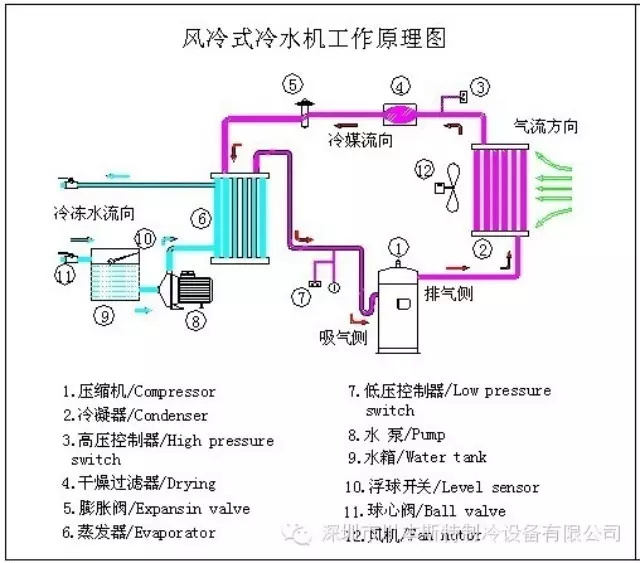
Service hotline:


After the installation of refrigeration equipment, it is inevitable that there will still be welding slag, iron filings, oxides, sand, and other residues inside the system. In order to avoid damage to valves and units, and to avoid clogging of filters and pipelines, it is necessary to discharge the pollutants before the operation of the unit. Pollutant discharge is usually carried out by blowing pressure gas through pipelines and systems, with a blowing pressure of 0.6 MPa. The blowing work can use compressors, air compressors, nitrogen cylinders, etc. as gas sources. For Freon systems, it is best to use nitrogen for blowing out work, as Freon requires high water content in the system, and using compressed air will inevitably bring in moisture. And nitrogen is non corrosive, moisture free, non flammable and non explosive, inexpensive, and easy to operate and use.

Pollutant discharge work can be carried out in different sections and floors. The sewage outlet should be located at the lowest point of each section. When discharging pollutants, close all valves in the system that come into contact with the external atmosphere, and fully open all other valves. At the discharge outlet, a wooden plug can be used to block the opening of the pipe section that needs to be blown out (for safety reasons, the wooden plug is fastened with iron wire or wrapped in a burlap bag to prevent it from flying out and injuring people). When the pressure reaches 0.6MPa, break off the wooden plug to quickly discharge the gas, in order to remove dirt and water from the pipeline. Repeat this process one to three times until all dirt and moisture are removed. Pollutant discharge work should be carried out continuously and sequentially until all are removed.
The inspection method for pollution discharge is as follows: When releasing gas, place a soaked white gauze or a wet white oil paint board at a distance of 150-200mm from the discharge outlet. If there are no obvious stains after blowing the gas, it is considered qualified. During the sewage discharge process, it is advisable to minimize the opening and closing of valves to prevent damage to the sealing line of valves caused by dirt. After the system discharge is completed, the valve core of the filter and valve should be disassembled and cleaned.

